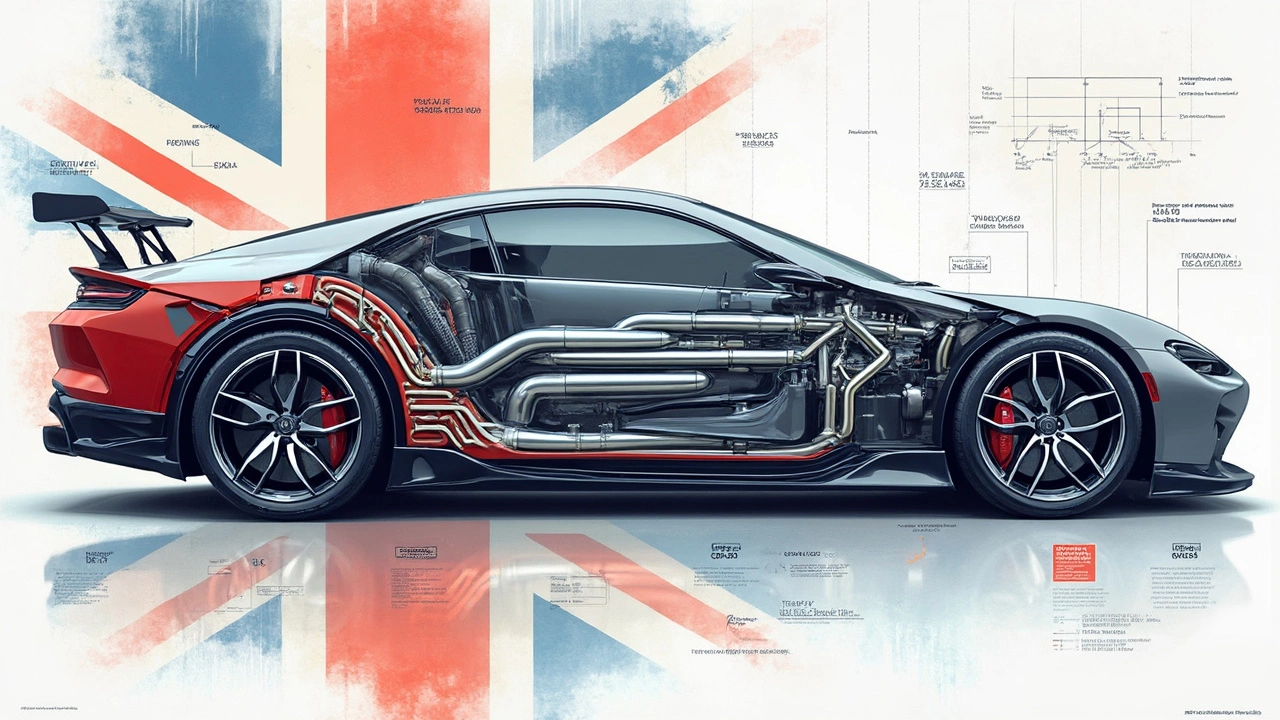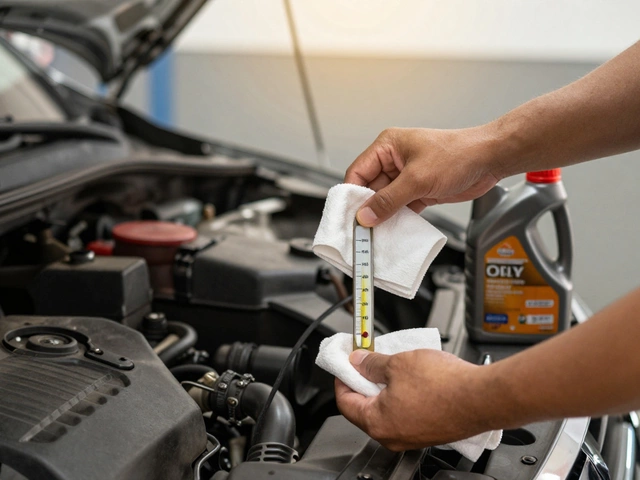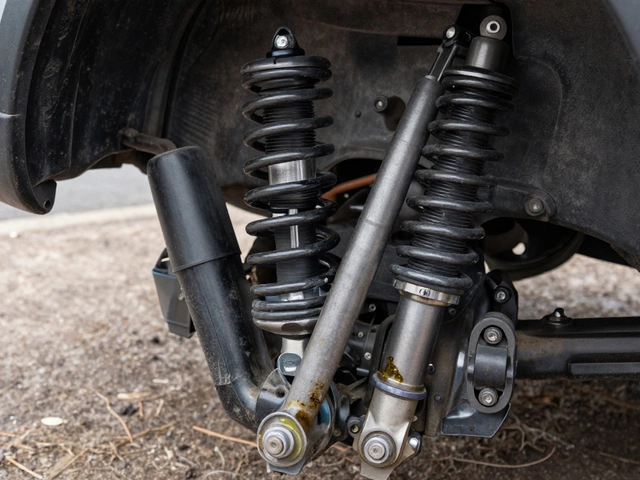Finding the right exhaust size for your car isn't just about making it sound cool or look sleek. It's a key factor in how your vehicle performs. You know the feeling when your car just isn't pulling like it should, even after you've revved it up? That might be because of your exhaust system.
A too-small exhaust chokes your engine, holding back those precious horsepower ponies. On the flip side, an oversized exhaust can cause low-end power loss. It's all about balance. You don't want to guess here; you want facts.
So, how do you know what size you need? Start by considering the engine's power output and your driving style. If you love tearing up the track, you'll need a different setup than someone who just cruises around town. But there's more to it than just picking a number.
- Why Exhaust Size Matters
- Common Myths About Exhaust Sizes
- Factors to Consider When Choosing
- Tips on Measuring Your Exhaust
- Making the Final Decision
Why Exhaust Size Matters
Getting the exhaust size right is crucial for your car's performance. It's not just a bunch of metal pipes carrying fumes away. Think of it like your car's windpipe. A properly sized exhaust ensures efficient removal of gases, which allows the engine to breathe better. When your engine breathes better, it performs better.
Boosting Performance
One of the main reasons why the right exhaust size is important is its impact on horsepower and torque. Engines need to get rid of exhaust gases quickly to suck in more oxygen. Too small an exhaust system can create back pressure, leading to a decrease in performance. On the other side, an oversized exhaust can reduce the velocity of the exhaust flow, which can also hurt performance, especially at lower RPMs.
Fuel Efficiency
The exhaust system isn't just about power; it's also about efficiency. A car's fuel efficiency can drop if the exhaust size is off. The engine has to work harder to push gases out, burning more fuel in the process. With gas prices deciding whether we buy a morning coffee or fill up the tank, every bit of efficiency helps.
Sound Considerations
And then there's the sound. Ever heard a car rumbling down the street from a block away? That’s the exhaust at work. A well-sized exhaust can give your car that deep, throaty growl without it sounding like an explosion every time you hit the gas. It's about finding the sweet spot between a satisfying rumble and an annoying roar.
Durability and Longevity
A properly sized exhaust isn't working overtime, which means it doesn't wear out as quickly. It also avoids common issues like rust and corrosion more effectively. Consider it a long-term investment in your car's health.
So, next time you think about modifying your car's exhaust system, remember how much the exhaust size affects your vehicle. It’s a blend of art and science that, when done right, makes every drive just a bit more enjoyable.
Common Myths About Exhaust Sizes
There's a lot of chatter out there about exhaust sizes, and not all of it's true. Let's bust some of the myths that might be steering you off course.
Myth 1: Bigger is Always Better
A common belief is that slapping on the biggest exhaust you can find will instantly boost your car's performance. Sounds logical, right? Let the engine breathe better, get more power. But here's the kicker: too-large an exhaust size hurts velocity, reducing low-end torque and causing a sluggish start when you hit the gas.
Myth 2: Exhaust Size Doesn't Affect Fuel Efficiency
Some folks think as long as the exhaust is on, its size won't impact efficiency. Nope! An appropriately sized system actually helps optimize fuel-air mixture — crucial for fuel-saving. Too wide pipes can mess up this balance, making your engine work harder than it should.
Myth 3: One Size Fits All
It's easy to think that if it worked for your buddy's ride, it'll work for yours too. But exhaust needs are specific to vehicle type. Your best friend's sports car might thrive with a certain exhaust, but your truck may fall flat with the same setup.
Myth 4: You Can Measure Just by Looks and Sound
Judging by sound or appearance is tempting, but it's unreliable. Factors like your engine's specs, intended use, and even climate can influence the best choice differently. Your goal should be balancing the pipe diameter with engine output, not just ear-splitting noise or massive tubes.
It's clear that understanding the nuances of exhaust systems can help debunk these myths. Instead of following hearsay, dig deeper into what's really going to benefit your ride the most. Remember, the right choice is more about fit and balance than brute size alone.

Factors to Consider When Choosing
Picking the right exhaust size isn't something you decide on a whim. There are some key factors to think about to make sure you're not just throwing cash into a noisy tube that's all show and no go.
Engine Size and Type
Your vehicle's engine size and type play a big role in determining the right exhaust size. Generally, larger engines with more cylinders will thrive on larger exhaust systems. If you've got a four-cylinder engine, you might not need as large of an exhaust as someone with a V8.
Performance Goals
Think about what you're actually aiming for with your ride. Are you chasing maximum horsepower? Looking for improved fuel efficiency? Or maybe you just want a deeper growl when you jump on the throttle? These goals will steer your decision on the exhaust size you choose.
Driving Habits
Are you cruising the highways, or is your car spending most of its time darting through city streets? The right system helps optimize for the type of driving you do most. Highway drivers might prefer a system with larger pipes for top-end power, while city drivers could benefit from something that boosts low-end torque.
Material Quality
It’s not just about size; material matters too. Stainless steel exhausts, for instance, are known for their durability and resistance to rust compared to regular steel. Spending a little more upfront might save you a headache down the road.
Budget
Let’s be real—money talks. You want the best performance for your buck. Sometimes, a mid-range kit might offer you a better balance between performance and cost than going full high-end.
DIY or Professional Installation
- Do you have the tools and know-how for a DIY install? Smaller fixes might be doable in your garage.
- If not, you’ll want to budget for professional installation. Make sure you factor in those costs when you're choosing your exhaust systems.
Tips on Measuring Your Exhaust
Getting the right measurements for your exhaust size isn't like throwing a dart in the dark. Precision here can make all the difference in your car's performance and efficiency. Plus, having the right info ensures you're not wasting money on what's essentially the wrong fit.
Gather the Right Tools
First things first, arm yourself with a tape measure, a vernier caliper (yeah, sounds fancy, but it's handy), and maybe even a buddy to lend a hand. You don't want to do this thing halfway and risk a mix-up in measurements.
Steps to Measure Exhaust Diameter
- Locate the exhaust pipe: Get under your car or pop the hood, depending on where you need to measure. Ensure you're in a safe, stable position.
- Use the tape measure: Wrap it around the exhaust pipe to get the circumference. Knowing the circumference is like having the secret key to finding out the diameter.
- Calculate the diameter: Divide the circumference by π (around 3.1416 if you're reaching for your calculator). Bam! You've got your diameter. Make sure this diameter fits with the intended performance and sound you're aiming for.
- Check connection points: Use a vernier caliper for precise measurements of flanges or any bolt-on connectors. This makes sure everything lines up perfectly when installing.
As John Smith from Car Mechanics Magazine says,
"Always double-check your measurements. A miscalculation can lead to inefficiencies and unwanted noise."
Verification and Adjustment
Got the measurements done? Great! Now measure again just to double-check. It's a little tedious but trust me, it'll save you from a whole lot of headaches down the road.
Exhaust systems play a crucial role in vehicle performance. By getting your measurements right, you can ensure compatibility and efficiency, ultimately leading to a smoother and more powerful ride. Remember, it's not just about the size; it's about getting the right fit for your needs.

Making the Final Decision
Alright, it’s crunch time—so how do you make the final call on your exhaust size? It can feel a bit like shopping for shoes without knowing your size. Thankfully, it’s less about guesswork and more about a good mix of science and personal preference.
First, ease into it by considering your primary goal. Want more power, better efficiency, or just a killer sound? If you’re aiming to boost performance, a larger diameter pipe might be necessary, but don't go too big, as it can actually harm low RPM performance.
Assess the Engine Power
Your engine's power output should play a pretty big role in your decision. For small to medium engines (think around 150-250 horsepower), a 2.25 to 2.5-inch diameter exhaust size usually does the trick. Larger engines, especially those over 400 horsepower, might need a 3-inch or bigger.
Listen to the Pros
Industry experts agree it’s not just about the size but the entire system flow. You want smooth transitions and bends, so listen to your mechanic if they suggest certain brands or configurations. They're not just trying to make a sale; they know what works.
Check the Fit
And let’s be practical for a second. The exhaust has got to fit under your car without scraping the ground or hitting other components. Professional installation can prevent these mishaps, ensuring everything aligns properly.
Budget it Right
Lastly, aim for the best balance of performance and price. High-end brands offer sweet setups but can make a huge dent in your wallet. On the other hand, economical choices can save money but might not last as long or enhance performance as you'd like.
Here’s a quick example breakdown to consider:
| Horsepower (HP) | Recommended Diameter |
|---|---|
| 150-250 HP | 2.25-2.5 inches |
| 250-400 HP | 2.5-3 inches |
| 400+ HP | 3+ inches |
Remember, your vehicle’s performance and your personal driving experience depend heavily on this choice, so take your time and maybe chat with others who have similar rides. Their insights and pitfalls can be pretty enlightening, and might just save you from making a costly mistake.








